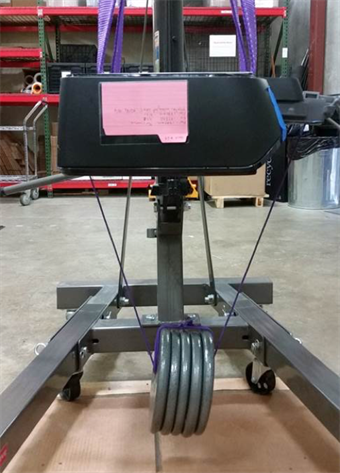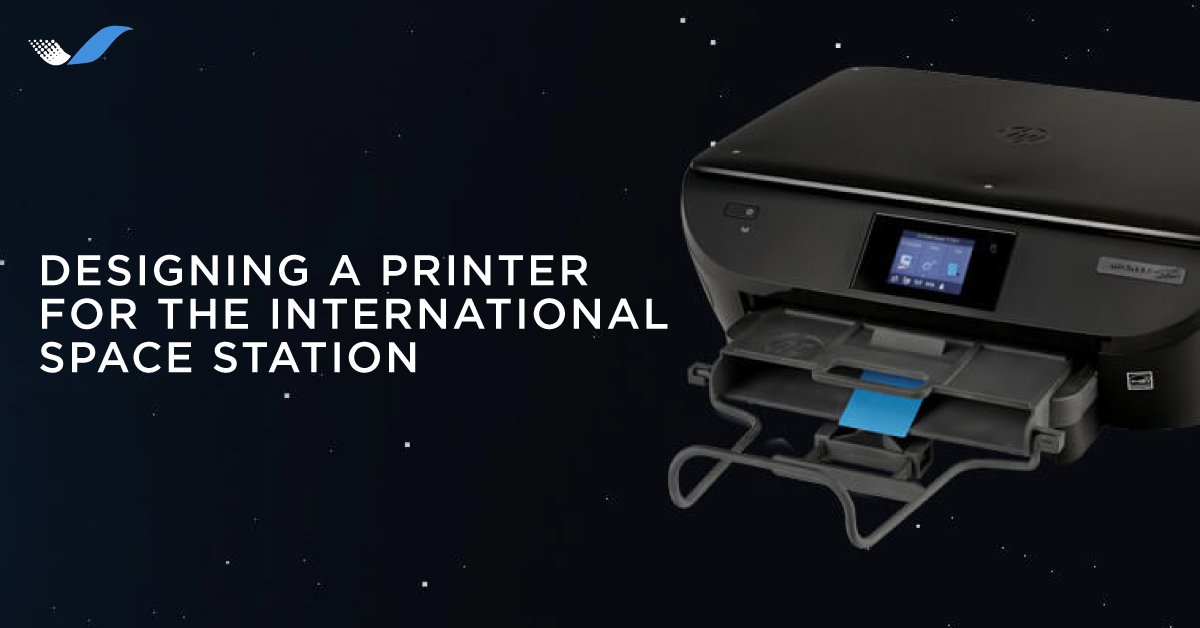Knuckles were as white as foam from a broken San Diego coastal wave as we applied 50 pounds of force on the printer, making the suspending rope taut. If I had plucked it, it would have reverberated like the high E on a guitar. Or more likely, it would have resulted in a thunderous clap caused by the sheet metal plate suddenly disengaging from the plastic case, which would have sent the already skittish engineers that had gathered rushing toward exits, much like how ringing bells on the cat scatter mice.
“Is it safe to do this?” one of them asked.
Is it safe to put a bank of these printers in a C-130 military aircraft along with engineers at high altitude and descend suddenly, creating a sense of weightlessness for up to 20 seconds?
That’s what the Simplexity team was up against when we helped HP modify OfficeJet 5740s into space-ready printers for the International Space Station, where NASA wanted to upgrade its existing printers.

Above: Modifying a printer for zero-gravity posed some unique challenges.
Modifying a Printer for NASA
To validate the engineering changes made to the printer to function in a zero-gravity environment, the team first had to verify that the aluminum printer mounting plates would be able to withstand loads up to 2.4G, which objects experience during the pullout of the C-130 aircraft from its descent.
And what you see in the image above is our margin test, which verified the mounting plate can withstand up to 4.3G of force, almost twice the necessary amount.
(For reference, the highest G-force roller coaster ride in the world 16 years running, the Tower of Terror in Johannesburg, South Africa, enables a maximum 6.3G.)
The main design requirement — that the modified 5740 print in zero-gravity — proved to be challenging because it was difficult to conceptualize and test. Is printing upside down equivalent to printing in zero-gravity? Not really, it’s more like printing in negative gravity. Therefore, we had to get creative verifying our engineering design work, such as printing under water (no, we didn’t do that) or reclining the printer at different angles to minimize paper handling effects (we did do that).
This brings us back to the C-130 military aircraft flight test. This was our one chance to test our engineered printer modifications in a weightless environment, so we had to make certain the aluminum mounting plate would secure the printer during testing. And, due to our engineering skill sets, it exceeded expectations and held.
If you want to learn further details about other modifications we performed with HP to enable a space-ready printer, please read our case study.
For information about our more Earthbound projects, feel free to check out our Portfolio page or reach us directly at info@simplexitypd.com.

